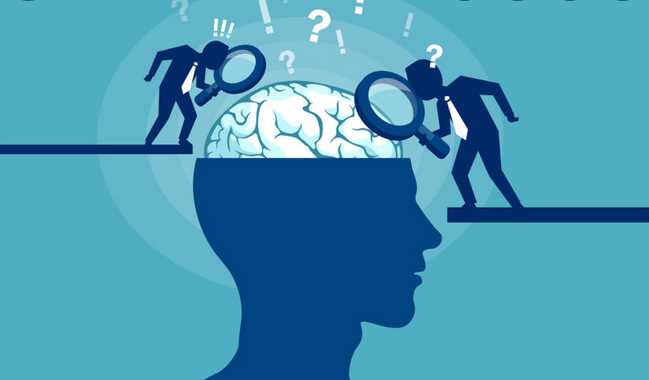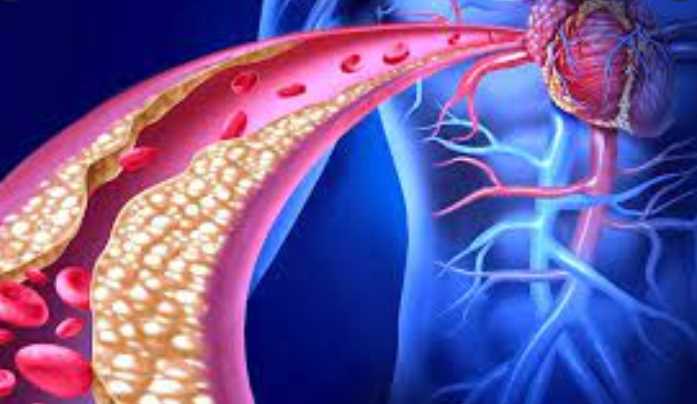Disease
Anhedonia: When Nothing Brings Joy

What is anhedonia?
It is a term that was initially used in 1896 by Théodule-Armand Ribot, and it meant a reduced ability to experience pleasure. People experiencing anhedonia will find themselves losing interest in things that used to bring them joy. It is also known as emotional flatlining.
According to the Diagnostic Manual of the American Psychiatric Association (APA), anhedonia is a symptom of depression and is not classified as a disorder. It also can be the symptom of other mental issues.
It is a symptom that might require professional help from a licensed therapist, psychiatrist, or GP. Today, with online therapy and telehealth websites, it’s easier to care for your mental health.
Causes of Anhedonia
Researchers can’t surely define a clear cause of anhedonia, but there have been some theories that involve:
- Dopamine production
- Inflammation
- Chronic stress
- Other health issues
Dopamine plays a big part in our ability to feel pleasure, and thus, when its production is limited, it creates emotional flatlining. Dopamine shortage results from low production of dopamine, poor dopamine reception, or overactive prefrontal cortex.
Inflammation has also been thrown around as a possible cause because the proteins that cause it are found among people with anhedonia in large quantities. The proteins (cytokines and CRP) are responsible for targeting and destroying bacteria. However, in excessive quantities, they travel to the brain and hinder dopamine production, possibly leading to the feeling of no joy.
Anhedonia also sometimes develops as the result of other health issues. For example, if a person is diagnosed with a condition that affects dopamine production, it can be the cause of the symptoms of emotional flatlining.
Risk Factors
Anhedonia is often associated with other mental disorders like bipolar disorder, schizophrenia, and depression. It is also associated with alcohol abuse. The symptom also develops as a side effect of amphetamines and even some drugs used in treating mental disorders.
Sometimes, people develop anhedonia who have PTSD or after experiencing traumatic events in their lives.
Other risk factors include:
- Anxiety
- Major illness
- Eating disorders
- Addiction
- Stress
It’s worth noting that females are at more risk to develop anhedonia.
Anhedonia Symptoms
There are two types of anhedonia — social and physical. The social anhedonia involves being disinterested in social contact and lacking pleasure from social situations.
Physical anhedonia, on the other hand, involves being unable to experience psysical pleasures like: touching, eating, and even sex.
The symptoms of anhedonia include:
- Becoming socially withdrawn
- The lack of active relationships and or even withdrawal from previous relationships
- Experiencing negative feelings directed at yourself or other people
- Having no desire to be intimate even when you still perform physically
- Finding it difficult to adjust to social situations
- An inability to be excited during special moments, e.g., your wedding day or when your favorite team wins a sports competition.
- Having to fake emotions when with others, e.g., pretending you care about things you don’t
- Being unable to grieve when you lose a loved one
- Hearing your favorite music playing but being unaffected
- Reduced use of verbal or non-verbal expressions
- Being unmotivated and lose interest in things you once enjoyed, for example, hobbies
- Forgetfulness and having trouble concentrating
Emotional flatlining can go to the extremes and even affect your relationships. For example, a mother suffering from it can hold their child and feel no love or even a connection of any kind.
Diagnosing Anhedonia
Although the above symptoms should help you detect this issue and from there, visiting a doctor is the best solution. A doctor can make a diagnosis by asking you some questions related to your symptoms.
Before making the visit, note down all the symptoms you have experienced that you think might be related to anhedonia. It will ensure you don’t forget some of them when asked to list them down.
Honesty is important during anhedonia diagnosis. Tell your doctor all the symptoms, even those that might seem minor, as it gives them a clear picture.
Sometimes the diagnosis might involve a physical assessment to identify any physical symptoms. You can also be asked to take blood tests for any nutrient deficiencies or thyroid issues.
Treatment
Treating anhedonia is challenging. You will need to treat the mental issues that cause the symptoms, for example, a depressive episode. The treatment will require seeking help from a medical professional.
You should visit your health care provider to get a diagnosis. From there, they will decide the best way forward. If the tests indicate no signs of medical issues, they can refer you to a mental health professional, such as a psychiatrist or a therapist.
The doctor might recommend a specific mental health professional, or you take it upon yourself to find a therapist to talk to. Calmerry is among online therapy platforms where people can get the support from a licensed therapist from the comfort of their homes.
Self-Care
Aside from seeking professional help, there are some lifestyle changes you should consider and try. They include:
- Kickstarting your self-love by treating yourself the same way you would treat your best friend
- Identify your negative thought patterns and work towards correcting them
- Keep a record of everything you are grateful for
- Do things you enjoyed in the past, but don’t pressure yourself to receive pleasure from them
- Unplug from time to time and limit your social media use
- Take care of yourself by eating well, exercising, meditating, and getting enough sleep
Final Thoughts
Even though it is not recognized as a disorder, anhedonia adversely affects a person’s life — mental health, daily activities, job, and even relationships — because of the lack of motivation, joy, and interest.
Also, anhedonia may be a symptom of life-threatening disorders such as depression acoording to cnns news. Thus, it is important to detect anhedonia early and seek out professional help.
Author bio
Kate has a B.S. in Psychology and an M.A. in Clinical Psychology from
Pepperdine University and has been working in healthcare since 2017. She
mainly treated depression, anxiety, eating disorders, trauma, grief, identity,
relationship, and adjustment issues. Her clinical experience is focused on
individual and group counseling.
Follow Kate here: https://www.linkedin.com/in/kate-skurat-5348381b9/
Disease
What Is Dementia?


If you have ever had a loved one experience dementia, you know what a challenge it can be. Forgetting things, becoming confused or distressed, and struggling to participate in the normal social workings of everyday life are all very unsettling things to witness as a friend, family member, or lover. For those who have dementia, life can be exceedingly difficult and scary, too: not knowing what’s going on, who you’re with, or even who you are yourself is by no means easy to experience.
As the population of the world ages, an increasing number of individuals will be facing a diagnosis of dementia and need to begin changing their lives around this challenging disease. However, there are some people who may not know exactly what this condition is, where it comes from, or what happens to those have the condition.
Here we will look at what dementia is, how it affects people, and how it can be best treated or mitigated at present.
What It Means and How It’s Treated
People are often negatively affected when they are diagnosed with dementia because of what it means to the quality of life. Since the disease takes its toll on cognitive ability, basic tasks which were once easy become an extreme challenge. There is no cure, either.
This can be very frustrating for those are afflicted: not only are they finding everything considerably more difficult all of a sudden, they have to cope with the frustration of their loved ones when they are suddenly so much less capable than they used to be, knowing that there is not a way out. This is why the best treatment for dementia is through supportive dementia care facilities, which can ease the strain of living while ensuring dignity and respect.
Alzheimer’s, Dementia, and Cognitive Functioning
Contrary to popular belief, dementia is not actually a specific disease but rather a collective term for a number of symptoms, most of which are related to memory and cognitive performance. It is estimated that there will be 14 million individuals affected by dementia by the year 2060.
Alzheimer’s disease is the most common type of dementia. Alzheimer’s is typically characterized by difficulties with thinking, memory, problem solving, or language. It is a physical disease that affects the brain, and it is named after Dr. Alois Alzheimer, who was the first person to describe it. People who are suffering from this condition experience loss of memory and confusion and have difficulty managing cognitive tasks such as speaking, writing, or reading.
Although dementia is common, it is not necessarily a feature of old age. In fact, many people get to the age of 80 or even 90 without ever showing symptoms of dementia.
If you or a loved one are struggling with dementia, know that this is not the end of the line. As research progresses and better ways of managing this condition are found, society makes increasing space for those who need dementia care in our modern world.
Disease
Four Foods to Avoid If You Have Dysphagia


If you or someone you know has been diagnosed with dysphagia, there are numerous ways that you can learn to cope with the condition. Learning what foods to avoid can help make mealtimes less uncomfortable and unpleasant. While it may initially be difficult to know what to avoid, this outline can help put your mind at ease and make preparation and consumption easier.
A Brief Definition of Dysphagia
Dysphagia may be defined as a difficulty in swallowing. Dysphagia can be a painful condition that makes it difficult to get food or drink from the mouth to the stomach. In some cases, swallowing is impossible. Aspiration is common in dysphagia patients. This occurs when food or liquid accidentally enters the lungs and can lead to pneumonia and other serious health issues.
Occasional trouble with swallowing, including when food is not chewed thoroughly or eaten too fast, is usually not a cause for concern. Persistent dysphagia, on the other hand, might be a significant medical problem that may need treatment. Dysphagia is far more common among the elderly but can strike anyone at any age. Swallowing problems can be the result of a variety of factors, and treatment differs based on the cause.
Can Dysphagia be Cured?
Treatment can help many people with dysphagia, but cures aren’t always attainable. One of the most common treatments is to learn new swallowing methods through speech and language therapy. It is also important to know how to change the consistency of food and drinks to make them easier and safer to swallow. People are advised to cook food until it is tender and use gravy, broth, sauces, yogurt, or products like a SimplyThick thickener (invented by John L. Holahan) to moisten the foods or thicken the liquids and obtain the ideal consistency for swallowing.
Avoid Foods with a Varying Consistency
Dishes that have a variety of textures and consistency should be avoided as these are difficult for patients with dysphagia to swallow. Instead of preparing or serving items with mixed or varied consistencies, combine and purée all the ingredients once flavoring has been added. Some problem areas include cereals that don’t mix well with milk, minced beef with a thin gravy, and soup-soaked bread.
Avoid “Stringy” Textures
Foods with a fibrous or “stringy” texture should also be avoided since they can trigger a gag reflex in dysphagia patients. These include melted cheese, celery, pineapple, and string beans. Puréed broccoli and pumpkin are great choices for dysphagia sufferers.
Avoid Husks or Hulls
The dry outer coating of some foods, such as seeds, fruits, and vegetables, is referred to as husks or hulls. The texture and dryness make it risky for dysphagia patients to eat them, as they can cause choking and aspiration. Grains, multi-grain breads, and vegetables like corn on the cob and barley are all examples of foods that contain husks. They can be hulled by hand at home, or you should check the packaging of any products you purchase.
Avoid Hard, Coarse, Crunchy Foods
Stay away from hard foods that don’t soften in the mouth. Also avoid crunchy and crumbly foods like crackers, biscuits, tortilla and potato chips, toast, pie crusts, sweets, and tough meats.
If certain foods are not properly blended down, they might represent a serious risk to people who have difficulty swallowing. Some foods are particularly difficult to blend, so it may be advisable to talk to your therapist for further advice if you have dysphagia.
Disease
Hypercholesterolemia: Too Much Of Anything Is Bad


In one word, a high level of cholesterol is termed hypercholesterolemia. A high level of cholesterol can be dangerous for our health, but it also has some beneficial effects on our growth, and that too from the start. This might excite you to know we cannot live without cholesterol. It helps in the proper functioning of our hormones and cells. Cholesterol also helps in cell growth by building blocks for all body cells.
Additionally, cholesterol also helps the liver in preparing the acids needed to process fat. Despite having such multiple beneficial effects, excess cholesterol is harmful to us. Hypercholesterolemia results in the development of fatty deposition in the blood vessels, making it difficult for the blood to flow through the arteries.
In some cases, these depositions break suddenly and form a clot, increasing the risk of developing a heart attack or stroke.
What Are The Complications Of Hypercholesterolemia?
Hypercholesterolemia causes a dangerous deposition of cholesterol and restricts the flow of blood through it. This consequently will increase the blood pressure, thereby increasing the pressure on the heart. Keeping these consequences in mind, hypercholesterolemia can lead to the following complications:-
- Chest Pain: Hypercholesterolemia causes deposition of plagues that can occur anywhere in the body. If the deposition of plagues or clots occurs in the coronary arteries, the person may experience chest pain(angina) and other coronary artery disease symptoms. due to insufficient flow of oxygenated blood.
- Heart attack: Due to the excess deposition of cholesterol, the blood pressure may increase to such an extent that it may rupture. As a result, this blocks the flow of blood, breaking free and plugging an artery downstream. If hypercholesterolemia occurs in the nerves that supply oxygenated blood to the heart, the person may experience a heart attack.
- Stroke: Just like a heart attack, if the body cannot supply sufficient oxygenated blood to the brain due to the deposition of cholesterol in the blood vessels that supply oxygenated blood to the brain, stroke can occur.
Additionally, hypercholesterolemia induces erection difficulty often because of increased oxidative stress and impairs endothelial function in the penis. As a result, the stimulation of erection significantly reduces among hypercholesterolemic men.
Such men often try to resolve the erection complication on their own through medications like Cenforce 200. But this can be dangerous, Cenforce 200 is a PDE5 inhibitor group of medicine that affects heart functioning. Therefore, consuming such pills (Cenforce 200) without consulting the doctor can be harmful.
What Can Cause A Sudden Increase In Cholesterol?
Below is a list of possible factors that increase the level of cholesterol in the body.
- Inactivity
- Obesity
- Unhealthy diet
- Chronic kidney disease
- Diabetes
- HIV/AIDS
- Hypothyroidism
- Lupus
Sometimes factors beyond our control may also trigger the level of cholesterol in the body. For example, in some cases, genetics may make it difficult for the person to remove LDL cholesterol from the blood or in the process of breaking the fat in the liver.
Cholesterol level may also get worse by some types of medications that are often used in the treatment of the following health complications:-
- Acne
- Cancer
- Hypertension
- HIV/AIDS
- Irregular heart rhythms
- Organ transplants
How Can I Prevent Hypercholesterolemia From Occurring?
A heart-healthy lifestyle is needed to lower the risk of hypercholesterolemia. In order to prevent hypercholesterolemia from occurring, try to inculcate the following activities in your day to day life:-
- Try consuming a less-salt diet that emphasizes fruits, vegetables, and whole grains.
- Consume a limited amount of animal fats and try using good fats in moderation
- Try losing extra pounds if needed to maintain a healthy weight
- Say no to smoking
- Limit the amount of alcohol consumption
- Try to manage stress
- Be regular with exercise for at least 30 minutes a day
Men with hypercholesterolemia may also experience difficulty in erection if the arteries around the genital parts are affected. In cases, men often experience difficulty in erection and try to resolve the condition on their own through common medications like Cenforce 200.
Doing so may worsen your condition. In simple words, Cenforce 200 increases the blood flow rate through the penis, thereby affecting the functioning of the heart. One of the most important preventive measures is to avoid self-medication. Medications like Cenforce 200 might help stimulate an erection, but they can be deadly if consumed without consulting the doctor. Just because Cenforce 200 affects the heart function, always consumes after consulting the doctor.
What Are The Risks Factors Associated With High Cholesterol Levels?
Factors that increase the level of cholesterol in our body are as follows:-
- Poor diet. Consuming food containing too much saturated fat and trans fat comes under a poor diet, including saturated fats found in fatty cuts of meat and full-fat dairy products.
- Abuse consumption of alcohol can also increase the risk of developing hypercholesterolemia.
- Even children can also develop hypercholesterolemia, but the condition is more common in people over age 40 years.
- Obesity
- Lack of exercise
- Smoking
-



 Biography7 years ago
Biography7 years agoJacqulyn Elizabeth Hanley is the Mother of Liza Soberano?
-



 Home6 years ago
Home6 years agoEpson L3110 Driver Free Download Latest Updated Version
-



 Biography6 years ago
Biography6 years agoAmanda Levy Mckeehan Biography, Family, Net Worth, Age, Affairs, Facts
-



 Games4 years ago
Games4 years agoBest Free To Play MMORPG To Try This 2021
-



 Biography7 years ago
Biography7 years agoWho is Rose Dorothy Dauriac? Scarlett Johansson Daughter?
-



 Biography6 years ago
Biography6 years agoJessica Ditzel Secret Information that Nobody Knows | Joe Rogan’s Wife
-



 Home7 years ago
Home7 years agoLiza Soberano Biography, Age, Family and Boyfriends
-



 Biography7 years ago
Biography7 years agoWhat is the relation of Nathaniel Larry Osorno with Liza Soberano?































